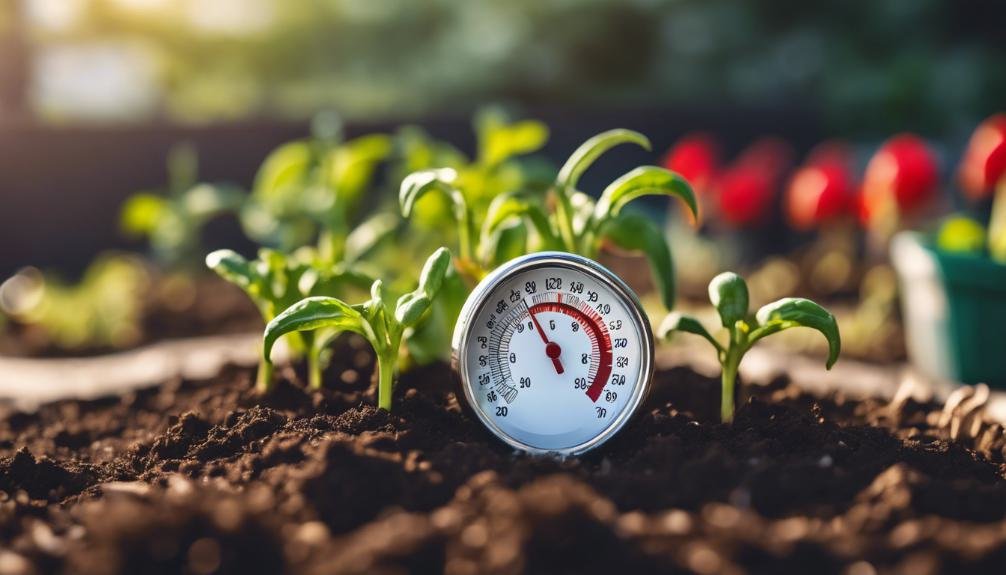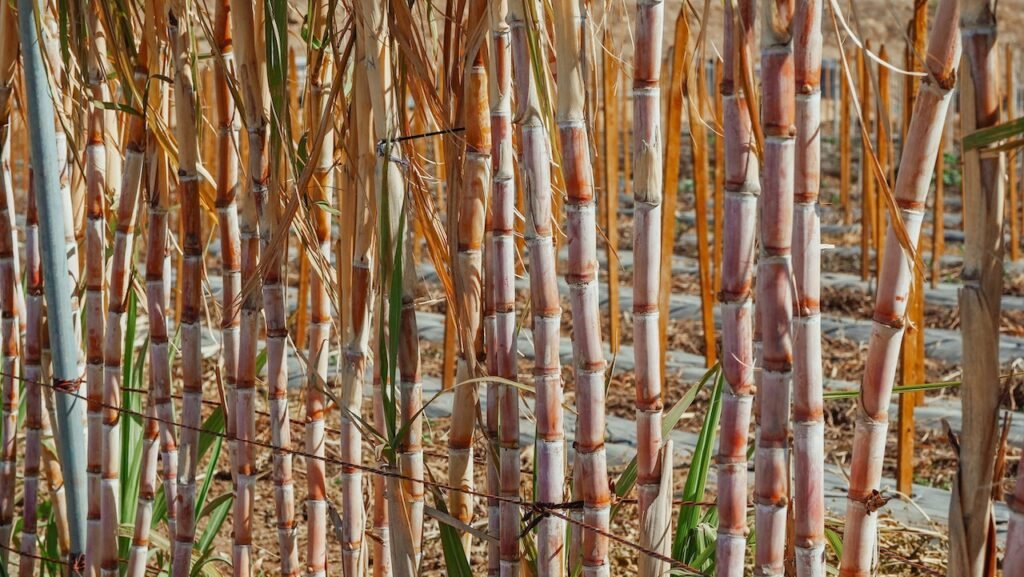You’ll want to plant your jalapeno plants when the outdoor temperature is consistently above 65 °F (18°C) and the risk of frost has passed, typically around late spring to early summer in most regions. This certifies peak growth, as jalapenos thrive in warm weather with temperatures between 65 °F and 85°F (18°C and 30°C). Make sure to check your region’s specific frost dates and plan accordingly. By understanding the ideal climate and temperature conditions, you’ll be well on your way to growing a successful jalapeno crop. Now, get ready to dig deeper into the specifics of soil preparation, seed starting, and transplanting for prime results.
Key Takeaways
- Plant jalapeno seeds indoors 8-10 weeks before the last frost date in your area to give them a head start.
- Wait until the last frost date has passed and the soil has warmed up to at least 65°F (18°C) before transplanting seedlings outdoors.
- In regions with mild winters, plant jalapenos in early spring or late summer/early fall when the temperature is between 65°F and 85°F (18°C and 30°C).
- Check the USDA Hardiness Zone to determine the best planting time, as jalapenos thrive in zones 9-11.
- Harden off seedlings by gradually exposing them to outdoor conditions over 7-10 days before transplanting them into a permanent outdoor location.
Climate and Temperature Considerations for Jalapeno Plants

When planting jalapeno plants, you’ll need to ponder the climate and temperature of your region, as these peppers thrive in warm weather with average temperatures between 65°F and 85°F (18°C and 30°C).
Jalapenos require a long growing season, typically taking 70 to 90 days to mature. They’re sensitive to extreme temperatures, so you must wait until the last frost date has passed before planting.
In areas with high humidity levels, jalapenos are more susceptible to fungal diseases, so guarantee good air circulation around your plants.
Additionally, jalapenos are sensitive to frost, so you’ll need to plan accordingly.
Check your region’s frost dates to determine the best time to plant. In areas with early frosts, consider starting jalapeno seeds indoors 8-10 weeks before the last frost date, then transplant them outside when the weather warms up.
Regional Jalapeno Planting Schedules
You’ll need to tailor your planting schedule to your region’s specific climate and frost dates, as jalapeno plants thrive in areas with warm summers and mild winters. This is vital because jalapenos are sensitive to frost and require a long growing season to produce a bountiful harvest.
To determine the best planting time for your region, consider the following factors:
- Zone hardiness: Check your region’s USDA Hardiness Zone to determine the average frost dates. Jalapenos thrive in zones 9-11, where the temperatures remain above 64°F (18°C) for most of the year.
- Frost dates: Identify the last frost date in spring and the first frost date in fall. Jalapeno plants should be planted after the last frost date and harvested before the first frost date.
- Regional climate: Consider the regional climate and weather patterns. Jalapenos grow well in areas with low humidity and moderate temperatures.
- Microclimates: Be aware of microclimates within your region, such as areas with unique temperature or moisture patterns.
Soil Preparation and Timing for Jalapeno Plants

Before planting jalapeno seeds or seedlings, prepare the soil by loosening it to a depth of 12-18 inches to accommodate the plant’s deep taproot. This will allow the roots to grow freely, supporting the plant’s growth and development.
Next, test the soil to determine its pH level and nutrient content. Based on the test results, add organic matter like compost to adjust the pH and provide essential nutrients. Adding compost will also improve the soil’s structure, increasing its water-holding capacity and aeration.
Aim for a pH between 6.0 and 7.0, as jalapenos thrive in slightly acidic to neutral soil. If your soil is heavy clay or sandy, mix in some organic matter to achieve a well-balanced soil structure.
Starting Jalapeno Seeds Indoors Early
To get a head start on the growing season, sow jalapeno seeds indoors 8-10 weeks prior to the last frost date in your area. This allows the seedlings to establish themselves before being transplanted outside.
For ideal results, select high-quality seeds that are resistant to diseases and pests. You’ll also need a suitable growing medium, such as a seed starting mix, and small pots or cell trays.
When it comes to providing the right environment, consider the following factors:
Temperature: Maintain a consistent temperature of around 75-85°F (24-29°C) to promote germination and growth.
Lighting: Use a high-quality lighting system, such as LED grow lights, to provide the necessary spectrum and intensity for jalapeno seedlings.
Humidity: Keep the air humid, ideally between 50-70%, to prevent moisture stress.
Watering: Water carefully, as overwatering can lead to root rot and other issues.
Transplanting Jalapeno Seedlings Outdoors

Once the seedlings have 2-3 sets of leaves, it’s time to harden them off and move them to their permanent outdoor location.
You’ll want to start by gradually exposing them to outdoor conditions over the course of 7-10 days. This seedling hardening process will help them adapt to wind, sun, and temperature fluctuations. Start by moving them to a shaded area outdoors for 1-2 hours a day, then gradually increase their exposure to direct sunlight and wind.
Once hardened, it’s time to transplant them into your garden layout. Choose a spot that receives full sun (at least 6 hours of direct sunlight) and has well-draining soil.
Space them 12-18 inches apart, depending on the mature size of the variety. Dig a hole that’s the same depth as the pot and twice as wide. Gently remove the seedling from its container, taking care not to disturb the roots. Place it in the hole, backfill with soil, and water thoroughly.
Mulch around the plants to retain moisture and suppress weeds. With proper care, your jalapeno plants will thrive in their new outdoor home.
Frequently Asked Questions
How Often Should I Water My Jalapeno Plants After Transplanting?
After transplanting, you should water your jalapeno plants when the top 1-2 inches of soil feel dry to the touch, avoiding water stress. Check soil moisture daily, and water every 2-3 days, depending on temperature and humidity.
Will Jalapeno Plants Grow Well in Containers or Pots?
You can successfully grow jalapeno plants in containers or pots, provided you choose a container size that’s at least 5-7 gallons and use a well-draining soil mix specifically designed for peppers.
Can I Grow Jalapeno Plants in Shaded Areas or Indoors?
As you step into the shadows, remember jalapeno plants crave sunlight, but they’ll tolerate partial shade. You can grow them indoors with sufficient indoor lighting, but be prepared for slower growth and potential stretching towards the light.
Are Jalapeno Plants Susceptible to Pests or Diseases?
You’ll need to monitor your jalapeno plants closely, as they’re susceptible to fungal infections like powdery mildew and root rot, which can be devastating if left untreated, so guarantee good air circulation and proper watering practices.
Can I Save Jalapeno Seeds From My Harvest to Replant Next Year?
You’ve got a million opportunities to save jalapeno seeds, but be picky! Select seeds from disease-free, pest-free plants, harvested at peak ripeness, to guarantee exceptional seed quality for next year’s crop.


